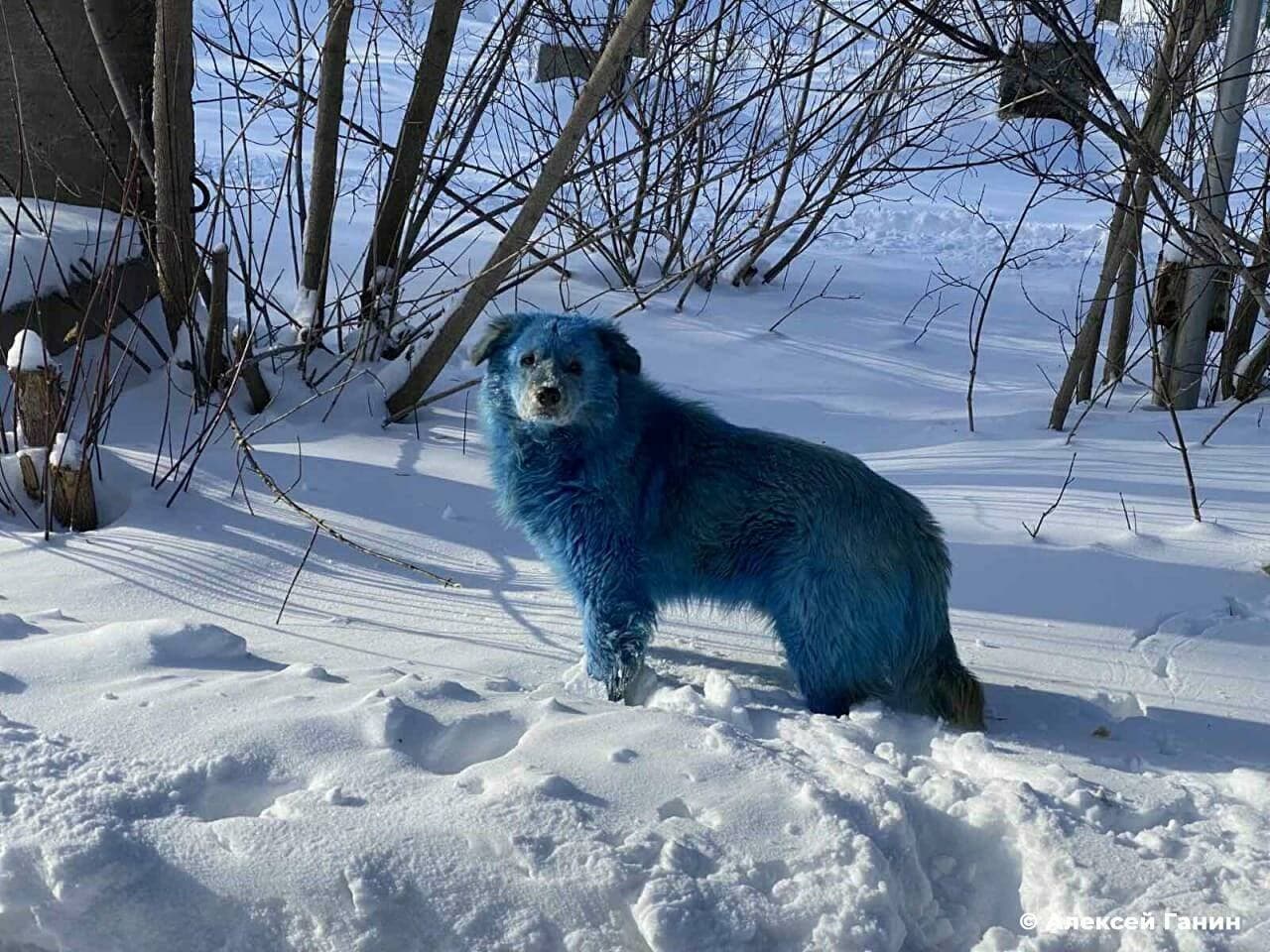In February on the Internet appeared photos of blue stray dogs. They were made in the area of Dzerzhinsk, a city in the Nizhny Novgorod region. A version immediately arose: the animals turned blue because they ended up in chemical waste. We checked if this is true.
The version that the dogs could turn blue due to chemical waste was one of the first to be proposed by Andrei Mislivets, the bankruptcy manager of the Dzerzhinskoye Plexiglas joint-stock company, near whose enterprise the animals were spotted.
In the past, the plant specialized in the production of acrylic glass and hydrocyanic acid. According to the head of the organization, there are many abandoned buildings left on the territory.
“Stray dogs are running around the area. Maybe in one of the buildings they found the remains of some kind of chemical - copper sulfate, for example, was lying around in it. Several years ago I heard that some dogs were painted in some unnatural colors. They also found something, but no one controls them. I cannot bear the costs of catching stray animals and sterilizing them,” told Mislivets RIA Novosti.
The version that animals could have gotten dirty in some kind of chemical waste (for example, copper sulfate) has spread in social networks And Media. News about dogs allegedly injured by chemicals appeared even in English-speaking media.
The Dzerzhinsk Plexiglas enterprise is indeed located in Dzerzhinsk. It has been under liquidation since 2015, and there may indeed be many abandoned buildings on its territory. At the same time, Dzerzhinsk is periodically included in the lists of the most polluted places: in Russia (in terms of air quality and waste in 2017) and in world (in 2013). Chemical waste dumps are also often found in the territories of abandoned enterprises or nearby. They have been found at least every year for the past three years: in 2018, 2019 And 2020 years. These are only those cases that became known to the media.
February 16 Rosprirodnadzor posted publications on social networks, in which he confirmed the incident and announced that an investigation had begun (February 12 started examination). Before this, the animals were caught by the Dzerzhinsk mayor's office and examined by veterinarians. They statedthat the condition of the dogs is satisfactory, but no source of paint was found on the territory of the enterprise and it is possible that the pigment got inside. At the same time, the mayor’s office noted that the health of the animals is not in danger. Rosprirodnadzor in its statement stated, that chemicals could actually remain on the territory, “which caused the dogs to turn blue.”
On February 15, veterinarians of the Zoozashchita-NN clinic, who examined the dogs, toldthat their tests are normal, including biochemistry. And February 18th became known, that what was found on their fur was not a chemical or copper sulfate, but a dye called “Prussian blue.”
“The dye does not pose any harm to health or danger to life, which is confirmed by inspection and blood and feces tests of animals carried out by Zoozashchita-NN LLC,” — clarified in a commentary to RBC, Anastasia Govorova, director of the department of information policy and interaction with the media of the Dzerzhinsk administration.
In this case, the dye can can also be used in painting plexiglass, the production of which was specialized in an abandoned enterprise. Probably, it was in it that the animals could get dirty. In a strict sense, the dye itself is not a “chemical waste”, but a chemically produced pigment.
Moreover, unlike substances such as copper sulfate, the Prussian blue pigment compound is generally safe. even use in medicine - for example, as an antidote for poisoning with thallium and cesium salts. The Prussian blue compound prevents the absorption of the radioactive nuclides they contain. They even created a drug based on Prussian blue that used in the rehabilitation of agricultural land after the disaster at the Chernobyl nuclear power plant - the substance also acted as a sorbent of radioactive nuclides.
Despite this, the pigment itself still remains a chemical. Therefore, the claim that dogs turned blue due to chemicals is true. Another thing is that these chemicals are not dangerous to animal health, as most of the authors of the statement suggest.
Mostly true
- Dzerzhinsk authorities named the reason for the appearance of blue dogs
- The blue dye on the wool of Dzerzhinsky dogs turned out to be safe
- Dzerzhinsk is recognized as one of the dirtiest cities in Russia
- Science until you're blue in the face
If you find a spelling or grammatical error, please let us know by highlighting the error text and clicking Ctrl+Enter.







